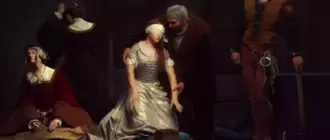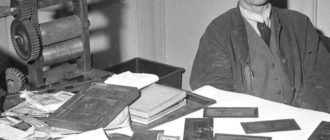
Capriccio is a kind of landscape genre in painting of the 17th early 19th centuries, which is characterized by the presence of architectural fantasies in paintings. Most often, in works written in the capriccio genre, the basis of the composition is the ruins of ancient structures in arbitrary fictional combinations. And to revive the plot, artists often used staffage they drew small figures of people and animals against the background of the landscape.

History

The magnificent palaces of rulers and nobility turned into ruined isolated islands of examples of Roman architecture. Salucci and Codazzi were the first to embellish the real appearance of the ancient ruins in their works.
The essence of the bold innovation of the artists was that in order to improve the composition of the paintings, they risked rearranging some of the historical monuments and completing some of the missing architectural elements. Moreover, Salucci showed more creative freedom in his works than Codazzi, who made only minimal changes to the composition.


The works of innovative artists in the Capriccio genre were well received by both critics and the public.
Not too famous painters have a lot of followers, not only in Italy, but also in other European countries.
The peak of the popularity of capriccio in painting came in the middle of the 18th century and coincided with the appearance of the Rococo style in the visual arts. However, by the beginning of the 19th century, interest in paintings with architectural fantasies gradually faded away.

The great Francisco Goya (Francisco Goya) at the turn of the XVIII-XIX centuries created the famous series of etchings “Caprichos”. But his works, created in a completely different genre, they sharply ridicule the political, social and religious customs of his contemporaries.
During the era of Romanticism, the term capriccio was closely associated with music. Italian violinist and composer Niccolò Paganini presented the world with 24 caprices for solo violin, which the public is enthusiastic about today. And on the basis of Paganini’s caprices, the Hungarian music genius Ferenc Liszt created a number of studies in the middle of the 19th century.

Today, colorful paintings in the genre of capriccio can be seen in the expositions of the best museums in the world and in private collections of art connoisseurs. But contemporary artists rarely turn to this charming theme in their work.

Notable Capriccio artists
Among the most famous artists of Capriccio, it is difficult to find masters of world painting of the first magnitude. Many names are undeservedly forgotten by descendants and are well known only to experienced connoisseurs of fine art.

Among them:
- Alessandro Salucci is one of the main founders of the genre. He very subtly managed to feel the public’s need for an innovative approach to the antique landscape and was not afraid to make significant rearrangements in the composition of the paintings.
- Viviano Codazzi is another co-founder of the genre. A more realistic style is inherent in his works. But in his search for aesthetic harmony, Codazzi also did not hesitate to move historical monuments to a more suitable place in his works.
- Giovanni Paolo Panini is an Italian master of capriccio and lead. Most of his work is made up of paintings depicting ancient sights of Rome and its landscape views.
- Marco Ricci is a representative of the Venetian school of painting of the early 18th century. By coincidence, at the age of 20, he had to leave his native Venice and move to Rome. It was here that he gained recognition as an artist thanks to his skillful work.
- Giovanni Battista Piranesi is the most famous graphic artist of the genre. Piranesi was also an architect and a renowned archaeologist, distinguished for his great capacity for work. During his life, he created hundreds of engravings depicting ancient architectural monuments in Rome.
- Hubert Robert is a French painter, author of many landscape fantasies. Hubert lived for 11 years in Italy, where he made thousands of sketches of ancient antiquities. These developments were more than enough for him until the end of his life to create dozens of colorful paintings.
- Joseph Gandy is a British art theorist and artist with a passion for ancient ruins. His paintings are characterized by an amazing architectural precision of details and an elegant sublimity of the master’s style, which neither contemporaries nor descendants appreciated at its true worth.







